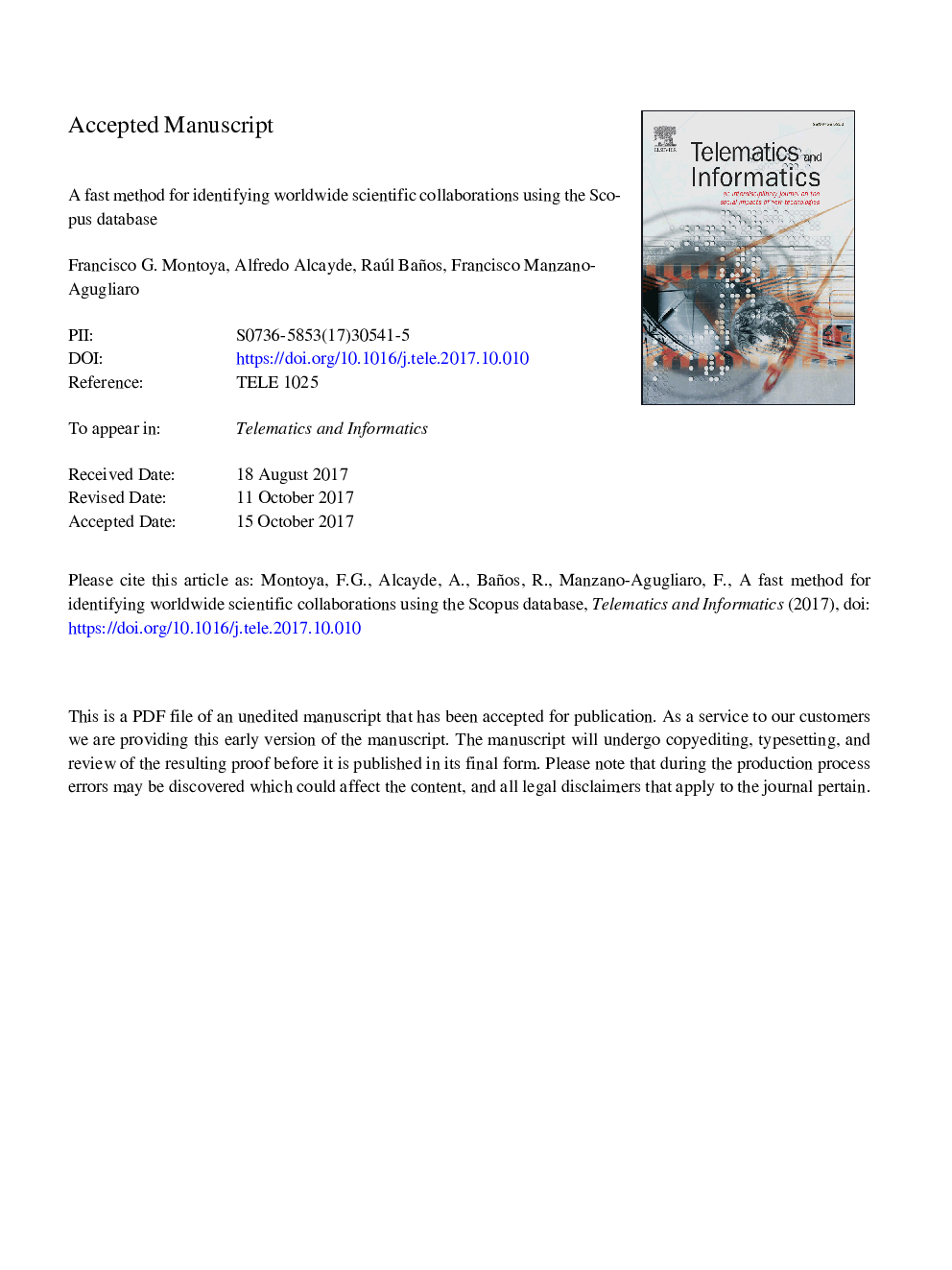| Article ID | Journal | Published Year | Pages | File Type |
|---|---|---|---|---|
| 6889744 | Telematics and Informatics | 2018 | 27 Pages |
Abstract
Science is essential for human prosperity because social and technological advances often depend on scientific advances. Science is living a golden era characterized by a rapidly growing number of researchers worldwide exploring different disciplines and research fields. Keeping in mind that funding is limited, many researchers are encouraged to establish new collaborations with individuals or groups of researchers. Furthermore, the funding bodies use increasingly complex criteria to determine the researchers and projects to be supported. In this regard, the analysis of scientific collaboration networks can help to determine the main areas of specialization of universities and research centres, as well as the type of internal and external collaborations of their researchers. This paper presents an advanced method for analysing scientific collaboration networks at universities and research institutions. This method is based on automatically obtaining bibliographic data from scientific publications through the use of the Scopus Database API Interface, which are then analysed using graph visualization software and statistical tools. This model has been validated through the analysis of a real university, and the results show that it is possible to determine in a fast way and with high reliability the main research lines of an institution as well as the structure of the collaboration network. The method opens new perspectives for the study of scientific collaboration networks because it can be applied at different levels of detail, from small research groups to large academic and research centres, and over different time frames.
Keywords
Related Topics
Physical Sciences and Engineering
Computer Science
Computer Networks and Communications
Authors
Francisco G. Montoya, Alfredo Alcayde, Raúl Baños, Francisco Manzano-Agugliaro,
